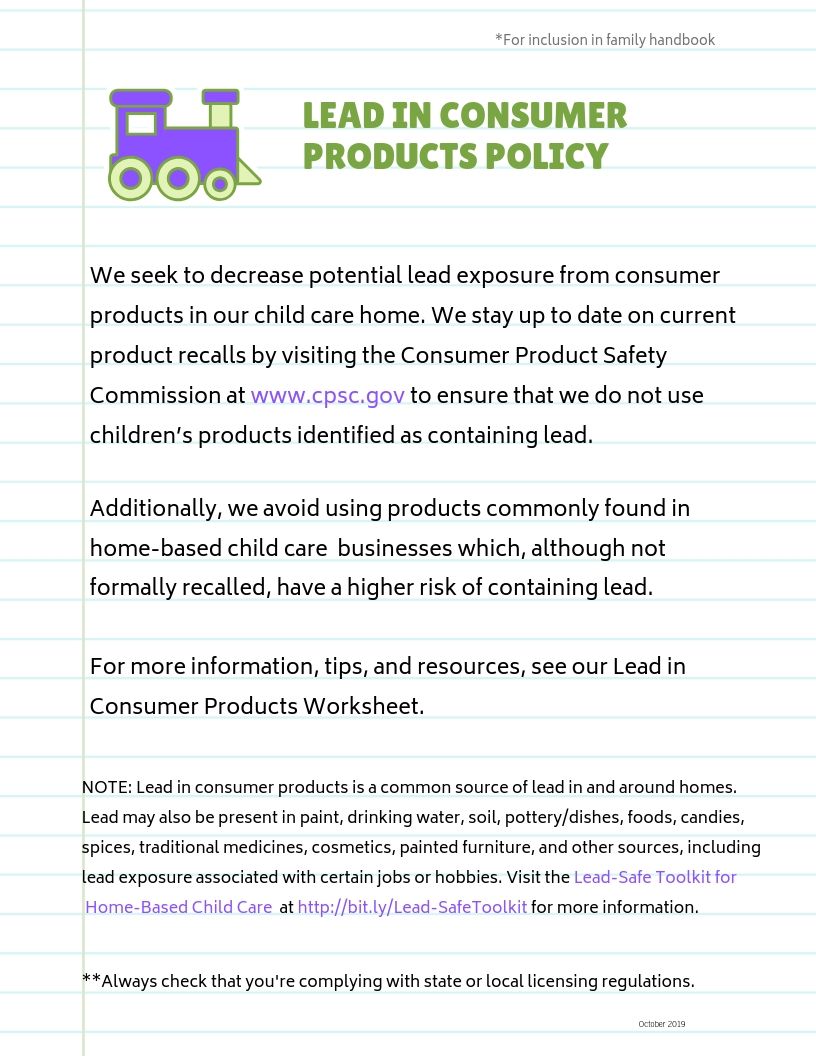Lead-Safe Toolkit for Center-Based Child Care
Lead in Consumer Products
COVID-19: For comprehensive guidance on cleaning, disinfecting, screening, social distancing and other COVID-19 best practices within child care environments, consult the Centers for Disease Control and Prevention (CDC) website. NCHH has also curated a page of resources to assist with the challenges created by COVID-19, including some that may be useful to center-based child care providers, as well as the Healthy Homes Guide to Cleaning and Disinfection, which provides guidance specific to cleaning and disinfecting safely. Visit the Homes and Facilities pages for guidance relevant to home-based and center-based child care settings. Also make sure to consult your state and local reopening guidelines.
Certain children’s products made in other countries and imported to the U.S. are known to have a higher risk of containing lead, including metal toy jewelry and children’s tea sets made from pottery. Some plastic toys made with vinyl/PVC may also contain lead. Food and liquids stored in lead-glazed pottery or porcelain can become contaminated, too. Lead may be present in certain herbal remedies, folk medicines, and imported spices and foods. Children can ingest or inhale lead-contaminated particles from these materials. There is NO safe level of lead in a child’s blood! Even very low levels can cause brain damage, lowered IQ, and behavior problems.
Below is a lead-in-consumer-products policy you can adopt for your business, along with a worksheet to help you, step by step, as you set this policy into action. Scroll through the images below to view and download each lead-in-consumer-products resource from the Lead-Safe Toolkit for Center-Based Child Care.
Webinar: Lead in Consumer Products
The final session in our four-part webinar series describes policies and methods for protecting the children entrusted to your care from lead hazards found in consumer products. This webinar series was created for home-based child care businesses, but the information applies to center-based child care facilities as well. The videos in this series run approximately 30 minutes and may be watched in any order. [url; 2020]
About the Project
With funding from the JPB Foundation, Eco-Healthy Child Care® (a national program of the Children’s Environmental Health Network), the National Association for Family Child Care (NAFCC), and the National Center for Healthy Housing have partnered to help family child care providers eliminate lead in their home environments by developing the Lead-Safe Toolkit for Home-Based Child Care and the Lead-Safe Toolkit for Center-Based Child Care.
The Lead-Safe Toolkit for Center-Based Child Care is a work in progress, so additional resources will be added periodically. We’ll also conduct webinars to acquaint providers with the toolkit, provide technical assistance to answer provider questions about how best to adopt lead prevention policies, and post testimonies from home-based child care providers, sharing their experiences as they work to protect the children in their care and their own families from lead hazards.
Additional Resources
You may also want to visit these directories within the Lead-Safe Toolkit for Center-Based Child Care:

